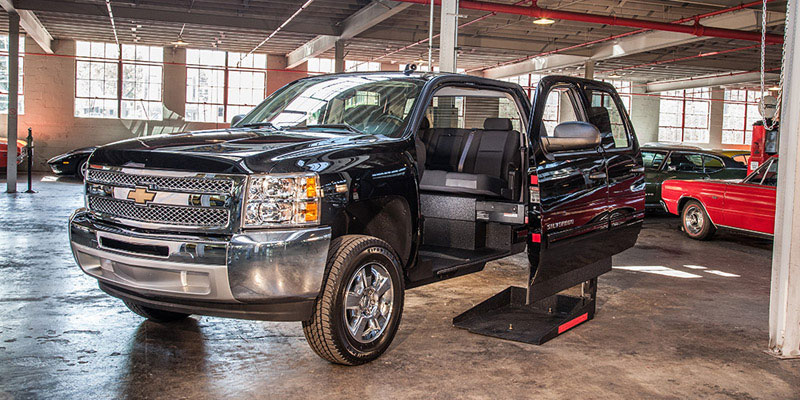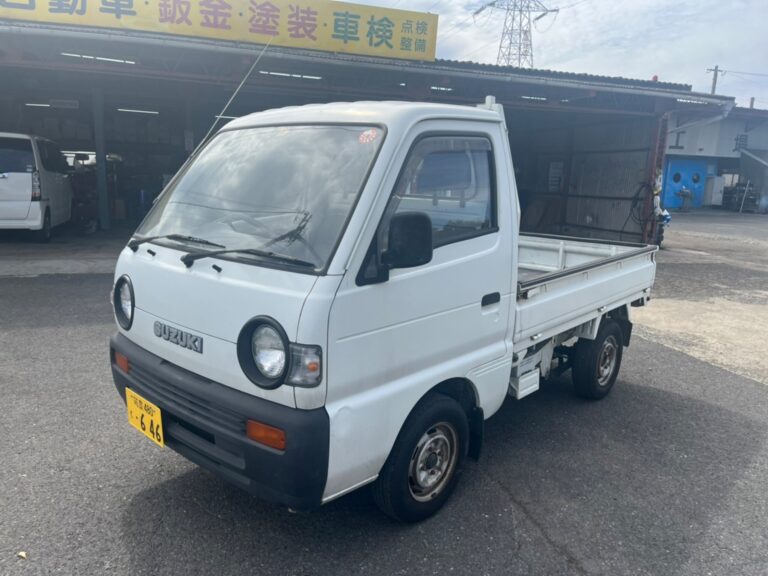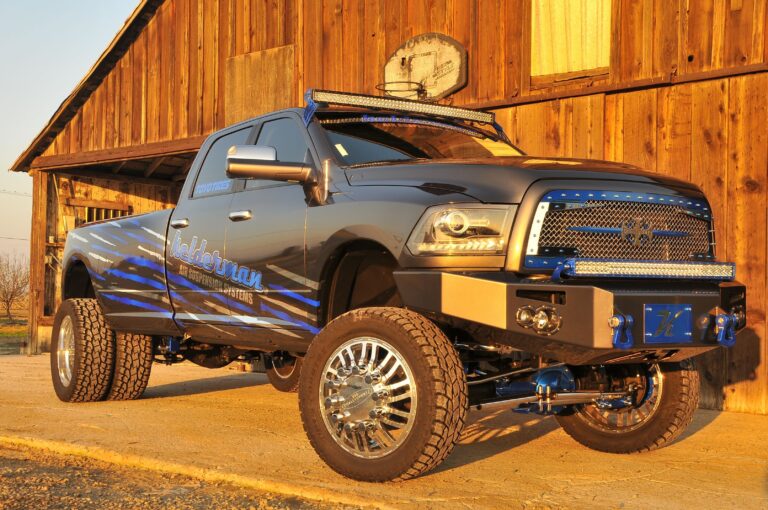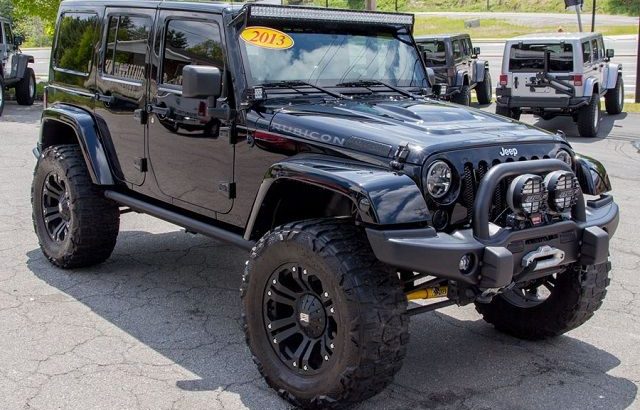Accessible Trucks For Sale: Your Comprehensive Guide to Freedom on Wheels
Accessible Trucks For Sale: Your Comprehensive Guide to Freedom on Wheels cars.truckstrend.com
For many individuals with mobility challenges, a vehicle isn’t just a mode of transport; it’s a gateway to independence, employment, recreation, and a full life. While accessible vans have long been the go-to solution, a growing number of people are discovering the unique benefits and versatility of accessible trucks. These specialized vehicles offer the rugged utility, towing capacity, and distinctive lifestyle appeal of a truck, combined with the essential modifications needed to accommodate a range of disabilities.
This comprehensive guide delves into the world of accessible trucks for sale, exploring everything from the types of modifications available to where to find these specialized vehicles, important purchasing considerations, and financial options. Whether you’re a seasoned truck enthusiast who needs a modified ride, or someone exploring new horizons for mobility solutions, understanding accessible trucks is the first step towards unlocking unparalleled freedom on the open road.
Accessible Trucks For Sale: Your Comprehensive Guide to Freedom on Wheels
Understanding Accessible Trucks: More Than Just a Vehicle
An accessible truck is essentially a standard pickup truck or, less commonly, an SUV, that has been professionally modified to allow individuals with mobility impairments to enter, exit, and operate the vehicle with greater ease and safety. Unlike traditional accessible vans, which often feature lowered floors and wide door openings, accessible trucks typically focus on solutions that facilitate transfer into the cabin or secure transport of mobility devices within the bed, while maintaining the truck’s original ground clearance and robust capabilities.
The primary distinction from accessible vans lies in their inherent utility. Accessible trucks are chosen by those who need to tow trailers, carry heavy loads, navigate rough terrain, or simply prefer the aesthetics and driving experience of a truck. They cater to a diverse range of needs, from veterans and individuals with spinal cord injuries to those with progressive conditions, offering a unique blend of accessibility and practicality.
Key Types of Accessibility Modifications for Trucks
The modifications available for trucks are highly specialized and often differ from those found in vans due to the truck’s higher ride height and structural design. Here are the most common types:
1. Wheelchair Lifts
Wheelchair lifts are perhaps the most critical modification for many accessible truck users.
- Underbody Lifts: These are the most common type for trucks. The lift platform stores horizontally beneath the truck’s chassis, preserving the truck bed and cabin space. When deployed, the platform extends out and lowers to the ground, allowing a wheelchair user to roll on, then lifts them to the truck’s cabin level.
- Platform Lifts (Exterior/Interior): While less common for primary driver/passenger access in trucks due to the high cabin, exterior platform lifts can be mounted to the rear for transporting a heavy power wheelchair or scooter in the truck bed. Interior lifts are almost exclusively found in vans.

2. Driving Controls
For drivers with limited use of their legs, hand controls are essential.
- Hand Controls: These allow acceleration and braking using only the hands. Common types include push/pull (push for brake, pull for gas), push/rock, and push/rotate.
- Steering Modifications: Spinner knobs provide one-handed steering assistance. Reduced effort steering or zero effort steering systems can be installed for those with limited arm strength, making the steering wheel easier to turn.
- High-Tech Driving Systems: For severe mobility impairments, highly advanced systems like joystick steering, voice-activated controls, or even head-controlled systems can be custom-integrated, though these are extremely complex and costly.

3. Seating Modifications
These aim to facilitate transfers or provide improved seating.
- Transfer Seats: These power seats can swivel outwards and/or lower to the ground, allowing a person to transfer from a wheelchair into the driver or passenger seat. Once transferred, the seat powers back into the upright driving position.
- Power Seats: Standard power seats offer easier adjustment for optimal driving posture.
4. Entry/Exit Aids
While not modifications in the same vein as lifts, these enhance accessibility.
- Running Boards/Side Steps: Provide an intermediate step for easier entry. Power deployable steps are also available.
- Grab Handles: Strategically placed handles can assist with balance and pulling oneself into the cabin.
5. Securement Systems
Once inside, wheelchairs or other mobility devices must be safely secured.
- Tie-Down Systems: Manual or power retractable straps that secure a wheelchair to the floor.
- Docking Systems: A more advanced option where a special plate on the wheelchair locks directly into a corresponding floor-mounted receiver.
Benefits of Owning an Accessible Truck
Choosing an accessible truck over other accessible vehicle types offers distinct advantages:
- Unmatched Utility and Versatility: Trucks excel at towing boats, RVs, trailers, and hauling heavy loads for work or recreation. This capability is often a primary reason for their selection over vans.
- Off-Road and All-Weather Capability: Many trucks come with 4×4 or AWD options, making them ideal for navigating challenging terrain, rural properties, or adverse weather conditions, providing access where other vehicles cannot.
- Lifestyle Match: For individuals who have always owned trucks, or whose hobbies and professions demand a truck’s capabilities (e.g., farming, construction, outdoor sports, camping), an accessible truck allows them to maintain their preferred lifestyle.
- Higher Seating Position: Many users appreciate the elevated driving position, offering better visibility and a commanding view of the road.
- Distinctive Appearance: For some, the aesthetics of a truck are simply preferred over a van, offering a sense of personal style and presence.
- Space for Mobility Devices: The truck bed offers ample space for transporting larger or multiple mobility devices, adaptive sports equipment, or other gear, keeping the interior cabin clear.
Important Considerations When Buying an Accessible Truck
Purchasing an accessible truck is a significant investment that requires careful thought and planning.
- Budget and Financing: Accessible trucks can be costly, ranging from tens of thousands for used models with basic modifications to over $100,000 for new, extensively modified vehicles. Explore financing options through specialized lenders, disability organizations, state programs, or grants (e.g., from the VA, state vocational rehabilitation agencies).
- Specific Needs Assessment: Crucially, determine who will be using the truck (driver, passenger, or both), the type and size of mobility device(s), the individual’s level of mobility and assistance needed, and any future considerations (e.g., progressive conditions). A Certified Driver Rehabilitation Specialist (CDRS) can provide an invaluable assessment.
- Vehicle Compatibility: Not all trucks are suitable for extensive modifications. Full-size pickup trucks (e.g., Ford F-150/250, Ram 1500/2500, Chevrolet Silverado/GMC Sierra 1500/2500) are generally the best candidates due to their robust frames and interior space.
- Dealer/Converter Reputation and Certification: Always work with a certified mobility equipment dealer. The National Mobility Equipment Dealers Association (NMEDA) QAP (Quality Assurance Program) certification is the gold standard, ensuring that the dealer adheres to the highest safety and quality standards for modifications and service.
- Warranty and Service: Understand the warranty coverage for both the base vehicle and the installed mobility equipment. These are often separate. Ensure there’s a reputable service center nearby that can maintain the specialized equipment.
- Test Driving and Ergonomics: This step is non-negotiable. Thoroughly test drive the truck with all modifications. Ensure that controls are within easy reach, transfers are smooth, and the driving position is comfortable and safe. If you’re a driver, perform multiple entries and exits with your mobility device.
- Resale Value: While an accessible truck provides immense value to the right buyer, the specialized nature of the modifications can narrow the resale market. However, a well-maintained, professionally modified vehicle from a reputable dealer will hold its value better within this niche.
Where to Find Accessible Trucks For Sale
Finding an accessible truck requires a more targeted approach than buying a standard vehicle.
- Specialized Mobility Dealers: This is by far the best and safest option. NMEDA-certified dealers specialize in selling and servicing accessible vehicles. They often have an inventory of new and used accessible trucks, can facilitate custom modifications, and offer expert advice, financing assistance, and after-sales support.
- Online Marketplaces: Websites dedicated to accessible vehicles (e.g., NMEDA’s dealer locator, MobilityWorks, BraunAbility, VMI) often list available inventory. Broader used vehicle sites like AutoTrader or eBay Motors might have listings, but you’ll need to use specific keywords like "wheelchair truck," "accessible pickup," or "hand controls truck."
- Private Sellers: Occasionally, you might find a used accessible truck directly from a private seller. While potentially more affordable, this route carries higher risks regarding the quality of modifications, lack of warranty, and no professional inspection. Exercise extreme caution and have any private sale vehicle thoroughly inspected by a certified mobility technician.
- Converting Your Own Truck: If you already own a suitable truck or purchase a new one, you can work with a certified mobility equipment converter to add the necessary modifications. This allows for full customization but can be a lengthy and expensive process.
Tips for a Successful Purchase
- Do Your Homework: Research different truck models, modification types, and reputable dealers. Read reviews and compare options.
- Get Multiple Quotes: Don’t settle for the first quote. Compare prices and services from several certified dealers or converters.
- Take Your Time: This is a major decision. Don’t feel pressured to buy quickly. Ensure the vehicle truly meets all your needs.
- Inspect Everything: If buying used, have a certified mobility technician perform a pre-purchase inspection on both the truck and the modifications. Check for rust, wear and tear on the lift/ramp, and proper functioning of all controls.
- Understand the Warranty: Clarify what parts are covered, for how long, and where you can get service.
- Involve Your Support Network: Bring family, friends, or caregivers to test drives and discussions. Their perspective can be invaluable.
Challenges and Solutions
While accessible trucks offer incredible advantages, there are some unique challenges:
- High Cost: The specialized nature of modifications makes these vehicles expensive.
- Solution: Explore all available financial aid, grants, and low-interest loans. Consider a well-maintained used accessible truck.
- Limited Availability: Compared to accessible vans, trucks are less common.
- Solution: Be prepared to search more extensively, potentially travel to a specialized dealer, or consider having a new truck modified.
- Complexity of Modifications and Maintenance: The systems are intricate and require expert care.
- Solution: Rely exclusively on NMEDA-certified dealers and technicians for all installations, service, and repairs. Regular preventative maintenance is key.
- Transfer Difficulty: For some, transferring into a high truck cabin can be more challenging than a lowered-floor van.
- Solution: Thoroughly test various transfer seat options and ensure the chosen solution provides sufficient assistance and safety.
Accessible Trucks For Sale: Estimated Price Ranges
The cost of an accessible truck varies dramatically based on the base vehicle (make, model, year, new vs. used) and the extent and complexity of the modifications. The following table provides general estimated price ranges in USD as of late 2023. These are illustrative and actual prices will vary significantly.
| Item/Description | Estimated Price Range (USD) | Notes/Considerations |
|---|---|---|
| Used Accessible Truck (Basic Mods) | $30,000 – $60,000 | Older model year, higher mileage, includes hand controls and/or basic transfer seat. May not include a lift or have an older lift. Price depends heavily on base vehicle condition. |
| Used Accessible Truck (Advanced Mods) | $60,000 – $90,000 | Newer model year, lower mileage, includes a modern underbody lift, transfer seat, hand controls, and tie-downs. Good condition base vehicle. |
| New Truck + Basic Modifications | $70,000 – $100,000+ | New base full-size pickup truck with hand controls, spinner knob, and/or a power transfer seat. Does not include a lift. |
| New Truck + Advanced Modifications | $100,000 – $150,000+ | New base full-size pickup truck with a sophisticated underbody lift, advanced transfer seat, full driving controls, and securement systems. High-end models can exceed this. |
| Individual Modification Cost (Estimates) | ||
| – Hand Controls | $1,000 – $2,500 | Price varies by type and complexity of installation. |
| – Spinner Knob | $100 – $300 | Simple attachment. |
| – Power Transfer Seat | $5,000 – $15,000 | Depends on features (swivel, lift, power functions). |
| – Underbody Wheelchair Lift (Truck) | $20,000 – $40,000+ | Highly complex installation; includes lift mechanism, wiring, structural modifications. Varies by lift model and truck compatibility. |
| – Securement System (tie-downs/docking) | $500 – $3,000 | Manual tie-downs are less expensive; power retractable or docking systems are more. |
| Maintenance/Service (Annual Estimate) | $500 – $1,500+ | For specialized mobility equipment (beyond standard vehicle maintenance). Varies based on usage and equipment type. |
Note: These prices are estimates only and can fluctuate based on market conditions, location, specific dealer pricing, and the exact features and complexity of the modifications.
Frequently Asked Questions (FAQ)
Q: Are accessible trucks as common as accessible vans?
A: No, accessible trucks are significantly less common than accessible vans. This is due to the greater complexity and cost of modifying trucks for primary driver/passenger access, and the fact that vans traditionally offer easier entry/exit for a broader range of mobility devices.
Q: Can any truck be made accessible?
A: Not easily or affordably. Full-size pickup trucks (e.g., Ford F-Series, Ram, Chevy Silverado, GMC Sierra) are the most suitable candidates due to their robust frame, larger cabin space, and compatibility with heavy-duty lifts. Smaller trucks or SUVs are often not practical for extensive modifications like underbody lifts.
Q: What’s the typical cost of an accessible truck?
A: The cost varies widely, but generally ranges from $30,000 for a used truck with basic modifications to over $150,000 for a new, fully customized accessible truck with advanced features. The modifications alone can range from a few thousand for hand controls to tens of thousands for an underbody lift and transfer seat.
Q: How long do modifications take?
A: Simple modifications like hand controls can be installed in a few days. More complex modifications, such as installing an underbody lift, transfer seat, and integrated driving controls, can take several weeks to a few months, depending on the custom nature of the work and the converter’s schedule.
Q: Is financing available for accessible trucks?
A: Yes. Many specialized mobility dealers offer financing options. Additionally, some traditional banks, credit unions, and organizations dedicated to disability support provide grants, low-interest loans, or information on state-specific assistance programs (e.g., through Vocational Rehabilitation, Medicaid waivers, or veteran benefits).
Q: What kind of warranty should I expect on an accessible truck?
A: You should expect two separate warranties: one for the base vehicle (from the manufacturer or dealer, if used) and a separate warranty covering the mobility equipment and its installation (from the mobility equipment manufacturer and/or the certified installer). Ensure you understand the terms, coverage, and service locations for both.
Q: Where can I get my accessible truck serviced?
A: Routine vehicle maintenance can be done at any qualified mechanic. However, all service, maintenance, and repairs related to the mobility equipment (lifts, hand controls, transfer seats) must be performed by an NMEDA-certified mobility equipment dealer or a specialized service center with technicians trained in these systems.
Conclusion
Accessible trucks represent a powerful fusion of utility, independence, and personal preference. For individuals who value the rugged capabilities of a pickup and require mobility solutions, these specialized vehicles offer an unparalleled path to freedom. While the journey to acquiring an accessible truck involves unique considerations regarding cost, modification types, and sourcing, the benefits of enhanced independence, versatility, and the ability to pursue work and hobbies without limitations are immeasurable.
By thoroughly researching your needs, working with NMEDA-certified professionals, and carefully considering all options, you can navigate the market for accessible trucks for sale with confidence. The right accessible truck is more than just a means of transportation; it’s a meticulously crafted extension of your independence, empowering you to tackle any road ahead.





